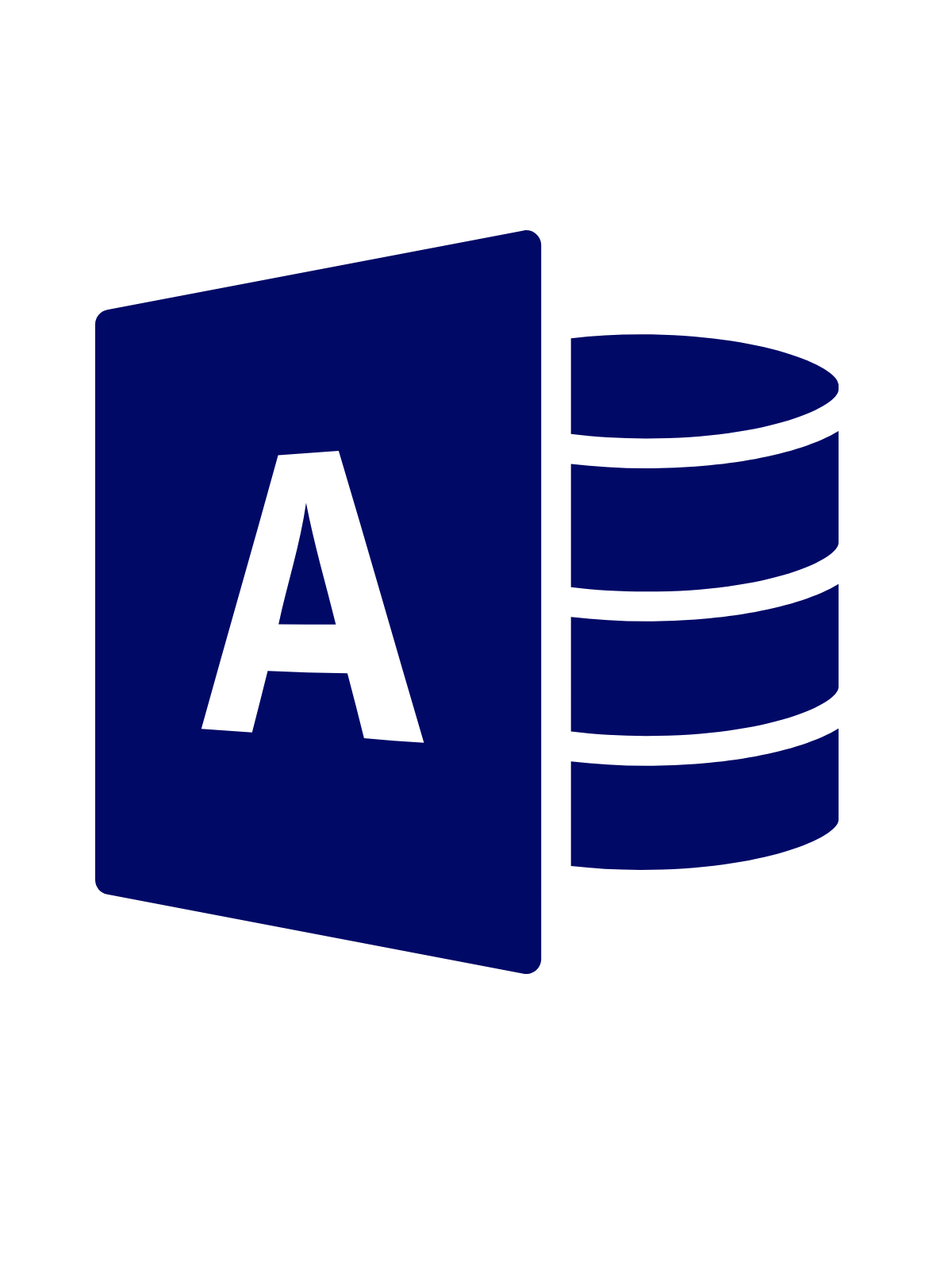AWS CLOUD MIGRATION
FLEXIBILITY and SECURITY
WHAT DO WE DO?
We make your life easier!
HOW DO WE DO THAT?
By reducing your costs and your stress!

PERFORMANCE and RELIABILITY

DO YOU HAVE A
MICROSOFT ACCESS DATABASE or SQL DATABASE?
Do you want all the advantages the Cloud Environment provides, without changing your system?
ARE YOU TIRED OF MAINTAINING EXPENSIVE IN-HOUSE SERVERS?
No more expensive hardware maintenance fees!

LET'S GET YOU CONNECTED.
Migrating Software from In-House Management to the Cloud Environment
In today’s fast-paced digital world, businesses are increasingly moving their software and applications from inhouse management to cloud environments. This migration offers numerous benefits, including cost savings, improved scalability, enhanced flexibility, and access to advanced technologies.
However, transitioning to the cloud requires careful planning and execution.
This is where our experts at Kaptol Cloud come in!
These steps are essential in ensuring a seamless transition from in-house management to the Cloud Environment.
Assessment and Planning
Understanding Your Needs and Goals
Before embarking on a cloud migration journey, it’s crucial to understand your business goals and how moving to the cloud can help achieve them. Whether it’s reducing costs, improving scalability, or enhancing collaboration, having clear objectives will guide your migration strategy.
Evaluating Your Current Infrastructure
Assess your current IT infrastructure, applications, and workloads. Understanding their complexities, dependencies, and requirements is essential to determine which cloud services are best suited for your needs.
Choosing a Migration Strategy - The 5 Rs
The "5 Rs" framework is a guideline used by organisations to plan their cloud migration process.
Each "R" represents a different approach towards moving applications and services from on-premises infrastructure to the cloud.
The choice of strategy is crucial and should be based on the specific needs, resources, and goals of the organization.
Below, we look deeper into each strategy:
- Rehost (Lift and Shift): This is the simplest form of cloud migration. In this approach, applications and their associated data are moved to the cloud without significant changes. It's akin to lifting your applications and infrastructure from an on-premises data center and shifting them to a cloud environment. This strategy is often chosen for its speed and cost-effectiveness, as it requires minimal modification and disruption. However, it may not take full advantage of cloud-native features and could lead to higher long-term costs if not optimised post-migration.
- Refactor/Re-architect: This approach involves modifying and optimising applications to leverage cloud-native technologies and architectures. While more complex and costly than rehosting, refactoring can make applications more scalable, resilient, and cost-efficient in the long run. It's suitable for applications that are critical to business operations and can benefit significantly from cloud capabilities, such as scalability, flexibility, and performance enhancements.
- Revise: This strategy sits between rehosting and refactoring. It involves making partial modifications to applications to fit into the cloud environment more efficiently than a simple lift and shift, but without the full-scale changes of a complete refactor. This could involve updating parts of the application code, changing the application’s architecture, or adopting some cloud-native services. It’s a balanced approach, often chosen to improve certain aspects of an application without the full investment required for re-architecting.
- Rebuild: Rebuilding means completely discarding the existing application and redeveloping it from scratch using cloud-native technologies. This approach allows organisations to fully utilise the benefits of the cloud, such as microservices architectures, serverless computing, and dynamic scaling. While this can be the most time-consuming and expensive option, it offers the opportunity to create applications that are fully optimised for the cloud, providing the best performance and scalability.
- Replace: Also known as "Repurchase" or "Drop and Shop," this strategy involves moving away from an existing application altogether and adopting a cloud-based solution, such as Software as a Service (SaaS). This can be an effective approach for outdated or costly-to-maintain applications, as it shifts the responsibility for maintenance, updates, and infrastructure to the SaaS provider. It’s often the fastest way to move to the cloud, but it requires transitioning to a new application and potentially losing some functionality or customisability.
Selecting the right cloud migration strategy requires a thorough assessment of your current IT infrastructure, application portfolio, and business needs. Factors to consider include the technical feasibility, cost, time, the potential for business disruption, and alignment with long-term business goals.
Often, organisations will use a combination of these strategies across different applications and services to best meet their objectives and requirements.
Selecting a Cloud Provider
Choosing the right cloud provider is a critical decision for any business looking to leverage cloud computing technologies.
The choice can significantly impact the operational efficiency, cost-effectiveness, and scalability of your technology infrastructure.
Here are some of the key factors to consider when selecting a cloud provider, along with insights into the offerings of major providers like Amazon Web Services (AWS), Microsoft Azure, and Google Cloud Platform.
Key Factors to Consider
1. Service Offerings
- Variety of Services: Assess whether the provider offers a range of services that match your specific business needs, such as computing power, storage options, networking capabilities, and machine learning platforms.
- Integration Capabilities: Consider how easily their services can integrate with your existing IT infrastructure and other third-party services.
2. Reliability
- Uptime Guarantees: Look for providers that offer high uptime guarantees, typically upwards of 99.9%.
- Disaster Recovery: Evaluate their disaster recovery options and policies to ensure business continuity in the event of software or hardware failures.
3. Security Measures
- Comprehensive Security Features: Check for robust security measures such as firewalls, encryption, intrusion detection systems, and multi-factor authentication.
- Regular Security Audits: Ensure the provider conducts regular security audits and has a strong track record of protecting client data.
4. Compliance Standards
- Certifications: Identify if they hold relevant industry certifications and comply with standards like GDPR, HIPAA, or SOC 2, depending on your sector's requirements.
- Legal and Regulatory Compliance: Verify that the provider will help you meet your industry-specific legal and regulatory compliance needs.
5. Pricing Structure
- Transparent Pricing: Look for clear, straightforward pricing structures without hidden fees.
- Scalability and Flexibility: Ensure the pricing model allows you to scale up or down based on your usage and pay only for what you use.
6. Support Services
- Quality of Support: Consider the level of customer support provided, including availability (24/7 support), response times, and the expertise of the support staff.
- Training and Resources: Check whether the provider offers adequate training materials, tutorials, and community support to help you make the most of their services.
Overview of Major Cloud Providers
Amazon Web Services (AWS)
- Strengths: AWS offers an extensive array of services and has a vast global infrastructure that ensures high reliability and scalability. It is known for its strong security posture and robust data encryption capabilities.
- Services: Includes Amazon EC2, S3, RDS, Lambda, and AWS Machine Learning, among others.
Microsoft Azure
- Strengths: Azure integrates seamlessly with other Microsoft software and services, making it an excellent choice for organisations that rely heavily on Windows-based applications.
- Services: Features include Azure Virtual Machines, App Services, Azure Cosmos DB, and Azure AI and Machine Learning tools.
Google Cloud Platform (GCP)
- Strengths: GCP is recognised for its high-performance computing offerings and deep investments in AI and machine learning technologies.
- Services: Provides Google Compute Engine, Google Kubernetes Engine, BigQuery, and AI Platform.
Selecting the right cloud provider involves a thorough analysis of your current and future business needs against what each provider offers in terms of service diversity, reliability, security, compliance, cost, and customer support.
By carefully assessing these factors, you can make a well-informed decision that aligns with your business objectives and enhances your technological capabilities.
Proof of Concept
Before fully committing to a large-scale cloud migration, it's prudent to begin with a proof of concept (PoC).
This strategy allows organisations to validate the feasibility of cloud solutions, minimise risks, and optimise their migration strategies by addressing practical challenges and performance metrics.
Here's a look at how to effectively implement a PoC and the benefits of doing so.
Steps to Implement a Proof of Concept (PoC)
1. Select the Right Application
- Less Critical Application: Choose a small, non-critical application that won’t disrupt business operations if unexpected issues arise. This application should still be complex enough to provide meaningful insights into the migration process.
- Representative Workload: Ensure the application includes features and workloads representative of larger, more critical systems to make the PoC valuable.
2. Define Clear Objectives
- Performance Benchmarks: Set specific, measurable goals related to performance, scalability, and cost-efficiency to evaluate the application post-migration.
- Success Criteria: Outline what success looks like for the PoC to help determine whether to proceed with broader migration efforts.
3. Prepare for Migration
- Technical Preparation: Review the application’s architecture for compatibility with the cloud environment. Make necessary adjustments to code and data structures.
- Security Considerations: Implement necessary security measures to protect data during and after the migration.
4. Execute the Migration
- Use of Tools: Utilise cloud migration tools provided by the cloud service provider or third-party solutions to facilitate the transfer.
- Monitor and Document: Keep a detailed log of the migration process, noting any challenges or deviations from the plan.
5. Assess the Migration
- Performance Analysis: Compare the performance of the application pre- and post-migration based on predefined benchmarks.
- Problem Identification: Identify any issues that arose during the migration, such as performance bottlenecks, security vulnerabilities, or compatibility issues.
6. Iterate Based on Learnings
- Adjustments and Optimization: Make necessary adjustments based on the outcomes and challenges identified during the PoC.
- Feedback Loop: Incorporate feedback from all stakeholders to refine the migration strategy for subsequent phases.
Benefits of Starting with a PoC
Risk Minimisation
- By starting with a less critical application, you reduce the risk of significant impact on your business operations, providing a safe environment to identify potential issues and solutions.
Strategy Optimisation
- The learnings from a PoC allow you to adjust your overall migration strategy, optimising technical approaches, resource allocation, and timelines for larger-scale implementations.
Cost Management
- Evaluating the cost implications during the PoC helps in forecasting more accurate budgets for full-scale migration and avoiding unexpected expenditures.
Stakeholder Confidence
- Demonstrating a successful PoC can help in gaining buy-in from stakeholders by showcasing tangible benefits and addressing concerns based on real data.
Implementing a proof of concept is a strategic approach that facilitates a smoother transition to cloud computing.
By methodically selecting an appropriate application and carefully monitoring its performance in the cloud, organisations can gain valuable insights, reduce risks, and set the stage for a successful full-scale cloud migration.
This thoughtful approach ensures that the migration strategy is robust, well-informed, and aligned with the business’s operational goals and technical requirements.
Data Migration
Data migration is an essential and complex component of transitioning to a cloud environment.
It involves moving data from one system to another, typically from on-premises infrastructure to a cloud-based system. Planning a secure and efficient data transfer strategy is crucial to ensure the success of the migration process.
Here’s a detailed look at how to develop an effective data migration strategy, with an emphasis on maintaining data integrity and minimising downtime.
Developing a Data Migration Strategy
1. Assessment and Planning
- Data Audit: Begin by conducting a thorough audit of your existing data. Identify what data needs to be migrated, its sensitivity, and any compliance requirements related to its storage and processing.
- Migration Planning: Develop a detailed migration plan that includes timelines, resources, tools, and processes. This plan should also outline roles and responsibilities for your migration team.
2. Choosing the Right Migration Method
- Cloud Data Migration Services: Many cloud providers offer specialized data migration services that simplify the process of moving data securely and efficiently. AWS Data Migration Service, Azure Data Box, and Google Transfer Appliance are examples of such services.
- Manual Migration: For smaller datasets or highly sensitive data, manual migration might be preferable. This involves exporting data from your current system and importing it into the cloud environment.
- Hybrid Approaches: Sometimes, a combination of automated tools and manual processes can be the best strategy, especially for complex data environments.
3. Ensuring Data Security
- Data Encryption: Encrypt data both at rest and in transit to protect sensitive information from unauthorized access.
- Access Controls: Implement stringent access controls and identity management protocols to ensure only authorised personnel can access the data during and after migration.
4. Data Integrity
- Data Validation: Use tools and techniques to validate the data both before and after migration to ensure no corruption has occurred.
- Consistency Checks: Regularly perform consistency checks during the migration process to ensure the data being transferred remains consistent with the source.
5. Minimising Downtime
- Staged Migration: Consider staging the migration, where data is moved in phases to reduce downtime. Critical data can be migrated first, followed by less critical data.
- Real-Time Data Replication: Utilise real-time data replication technologies to keep your new system in sync with the old one until the switch is fully made. This approach helps in minimizing downtime and reducing business disruption.
6. Testing and Validation
- Pilot Testing: Conduct pilot tests with small sets of data to validate the migration process. This helps in identifying potential issues without impacting the entire dataset.
- Comprehensive Testing: Once the migration is complete, perform comprehensive testing to ensure the system is functioning correctly and the data integrity is maintained.
7. Post-Migration Review
- Performance Assessment: After the migration, assess the performance of the data in the new environment to ensure it meets the required specifications.
- Feedback and Improvements: Gather feedback from users and stakeholders to identify any areas for improvement, and iterate on the migration strategy accordingly.
A secure and efficient data migration strategy is vital for successful cloud adoption.
By carefully planning the migration process, employing the right tools and methods, and prioritizing data security and integrity, organisations can minimise downtime and ensure a smooth transition to the cloud. The key is thorough preparation and ongoing monitoring of the migration to adapt and respond to any challenges that arise. This structured approach will help maintain operational continuity and protect valuable data assets throughout the migration process.
Application Migration
Migrating your applications to the cloud based on the chosen strategy is a critical phase in the cloud adoption process.
This migration can range from straightforward rehosting (often referred to as "lift-and-shift") to more complex re-architecting or refactoring efforts.
During this phase, the primary goal is to optimize applications to fully leverage the unique capabilities and benefits of the cloud environment.
Approaches to Application Migration
1. Rehosting (Lift-and-Shift)
- Overview: This approach involves moving applications to the cloud without making changes to the code. It is generally the fastest migration method, suitable for businesses looking to quickly realise the benefits of the cloud.
- Benefits: Minimises the initial cost and complexity; ideal for companies with tight timelines.
- Considerations: While it is the simplest approach, it may not allow the application to take full advantage of cloud-native features such as scalability and elasticity.
2. Replatforming
- Overview: This approach involves making minimal changes to the applications to gain some benefits of the cloud. For example, adjusting the way the application handles sessions to better utilise cloud infrastructure.
- Benefits: Offers a middle ground that increases application efficiency without extensive changes or resource commitments.
- Considerations: It requires some modifications to the code, so it's essential to have developers familiar with both the original and target platforms.
3. Refactoring/Re-architecting
- Overview: This approach involves a significant redesign of the application to be cloud-native. This might include adopting microservices architectures or making use of serverless computing.
- Benefits: Maximises cloud benefits, such as scalability, flexibility, and resilience.
- Considerations: It is the most time-consuming and costly approach but offers long-term benefits with optimised operational costs and improved performance.
Key Steps in the Migration Process
1. Assessment and Inventory
- Before beginning the migration, assess all applications for cloud readiness to determine the best migration strategy for each based on complexity, business importance, and cloud compatibility.
2. Migration Design
- Design a migration approach that aligns with business objectives and technical requirements. This design should consider integration points, dependencies, and potential bottlenecks.
3. Testing and Pilot Migration
- Conduct pilot migrations for critical applications. This involves moving smaller or less critical components first to test the migration process, identify potential issues, and refine the approach.
4. Execution
- Implement the migration, keeping in line with the designs and strategies set during the planning phases. Ensure robust monitoring and support structures are in place to address issues as they arise.
5. Optimisation
- Post-migration, focus on optimising the applications to utilise cloud-specific features such as auto-scaling, dynamic load balancing, and managed services.
- Continuously refine and optimise applications based on performance metrics and business requirements.
6. Continuous Improvement and Updates
- Technology and business needs evolve; maintain an iterative improvement approach to application development and deployment in the cloud, leveraging new tools and services as they become available.
Migrating applications to the cloud requires a clear understanding of both the existing application landscape and the capabilities of the cloud environment. Whether rehosting, replatforming, or re-architecting, each strategy requires careful consideration and planning to ensure a successful transition. By focusing on optimising applications post-migration, businesses can fully leverage cloud capabilities, achieving greater efficiency, scalability, and innovation.
This phase is crucial in realising the full potential of cloud investments, enabling businesses to adapt more quickly to market changes and customer demands.
Testing
Comprehensive testing in the cloud environment is crucial.
This includes functional testing, performance testing, security testing, and user acceptance testing. Ensure that the migrated applications meet all requirements and perform optimally.
Deployment
Deploy the migrated applications to the production environment.
This can be done gradually (phased approach) or all at once (big bang approach), depending on your strategy and risk assessment.
Optimisation and Management
Post-migration, continuously monitor, manage, and optimise your cloud environment.
Focus on cost management, performance tuning, and security enhancements.
Utilise cloud management tools for better efficiency.
Training and Change Management
Provide necessary training to your team to adapt to the new cloud environment.
Address any cultural and operational changes to ensure a smooth transition.
Migrating software from in-house management to the cloud is a transformative process that can bring significant advantages to your business.
However, it requires meticulous planning, careful execution, and ongoing management.
By engaging professionals, like Kaptol Cloud, you can ensure a successful migration that aligns with your strategic objectives and paves the way for future growth and innovation.

What is Amazon Web Service and how does it work?
Amazon Web Services (AWS) is a comprehensive, evolving cloud computing platform provided by Amazon.
It offers a mix of infrastructure as a service (IaaS), platform as a service (PaaS), and packaged software as a service (SaaS) offerings. AWS services are designed to provide organisations with tools such as compute power, database storage, and content delivery services, among many others, to help them scale and grow.
Here's a detailed explanation of AWS and how it works:
Cloud Computing:
AWS operates on a cloud computing model, which means it provides computing resources over the internet.
Cloud computing allows users to access and use computing services without the need for physical hardware and infrastructure. This model offers flexibility, scalability, and cost-efficiency.
Key Components of AWS:
Compute: AWS provides various services for computing power, such as Amazon EC2 (Elastic Compute Cloud), which allows users to run virtual servers and scale the computing capacity up or down as needed.
Storage: AWS offers several storage solutions like Amazon S3 (Simple Storage Service) for scalable object storage, Amazon EBS (Elastic Block Store) for block storage, and Amazon Glacier for long-term archival storage.
Database: AWS provides managed database services like Amazon RDS (Relational Database Service), Amazon DynamoDB (a NoSQL database service), and Amazon Redshift (a data warehousing service).
Networking: Services like Amazon VPC (Virtual Private Cloud) enable users to create isolated networks within the AWS cloud, and Amazon Route 53 provides a scalable DNS web service.
Developer Tools: AWS offers tools for developers, such as AWS CodeBuild, AWS CodeDeploy, and AWS CodePipeline, which aid in code compilation, deployment, and continuous integration and delivery.
Management Tools: AWS provides management tools like AWS CloudFormation, AWS CloudWatch, and AWS Auto Scaling to help users manage their AWS resources.
How AWS Works:
Service Access: Users can access AWS services through the AWS Management Console, AWS Command Line Interface (CLI), or Software Development Kits (SDKs). These tools allow users to manage and operate AWS resources.
On-Demand Services: Many AWS services operate on an on-demand, pay-as-you-go basis. Users pay only for the services and resources they use, without upfront commitments or long-term contracts.
Scalability and Elasticity: AWS provides the ability to scale services up or down based on demand. This elasticity is a key benefit of cloud computing, as it allows for efficient resource utilization and cost savings.
Global Infrastructure: AWS operates data centers around the world, divided into regions and availability zones. This global infrastructure ensures high availability, redundancy, and low latency for applications and services.
Security:
AWS places a strong emphasis on security and compliance. It offers features like identity and access management (IAM), encryption, and security certifications to ensure that customer data is protected.
Applications and Use Cases:
AWS supports a wide range of applications, from simple websites and mobile apps to complex machine learning applications and enterprise-level operations.
It's used by organisations of all sizes across various industries.
LET'S TALK
We'll take your current systems to a whole new level of security and functionality.



